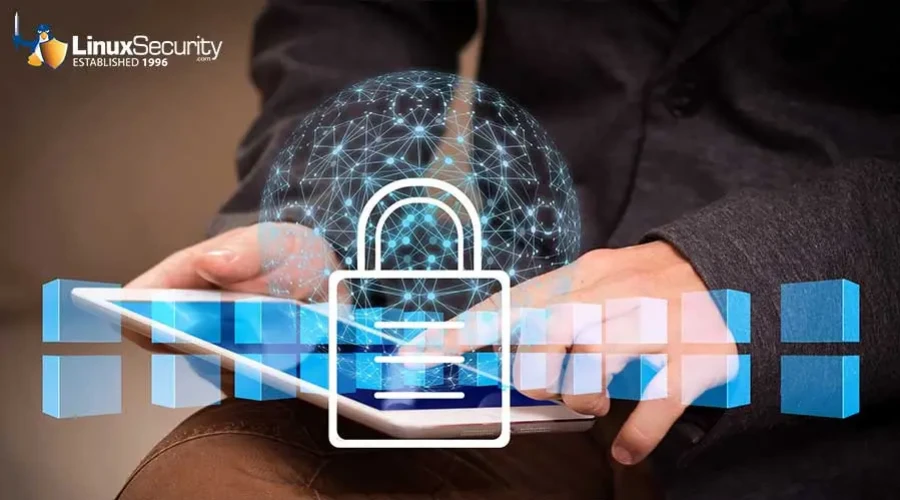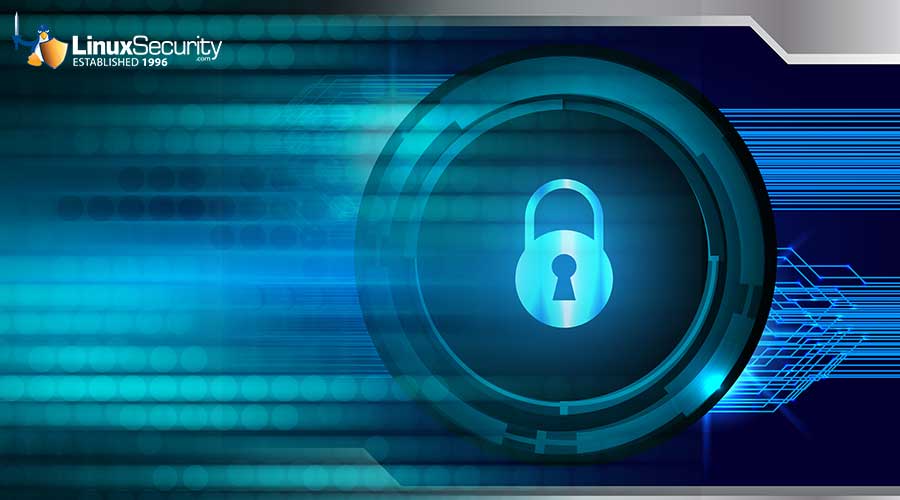Linux Container Security Primer

In today's rapidly evolving digital landscape, where agility and scalability are paramount, traditional software deployment methods often fall short. Container technology is a game-changing innovation that has revolutionized how software is deployed, managed, and scaled. It offers many benefits to ensure that applications run consistently regardless of the hosting environment.
Safeguarding your digital assets is crucial for protecting sensitive data and preventing unauthorized access. It is reported that security concerns remain one of the top network security issues related to container adoption. The most common container incidents include cyber security vulnerabilities in container images, misconfigurations, unauthorized access, and container runtime weaknesses exploited during attacks in network security.
In this article, we will take a deep dive into container security by exploring the underlying concepts, reviewing basic container security considerations, understanding popular containerization platforms, and checking security considerations for businesses. Continue reading to learn how containerization shatters software deployment barriers.
Understanding Containers
A container is an isolated software unit that ensures the application runs flawlessly in different computing environ ments. Containers include codes and dependencies, an operating system, a file system, networking, and a runtime environment that allows for efficient encapsulation and running. Consistent and portable containers provide a self-contained space, making it convenient for developers to build and deploy software.
ments. Containers include codes and dependencies, an operating system, a file system, networking, and a runtime environment that allows for efficient encapsulation and running. Consistent and portable containers provide a self-contained space, making it convenient for developers to build and deploy software.
Containers and Virtual Machines (VMs) differ in a few ways. VMs are resource-intensive, reproduce complete computers with their own OS and kernel, and communicate via Virtual Machine emulation services. Containers, on the other hand, are lightweight, share the host system's kernel, and communicate via standard system calls.
Here are the benefits of using containers for application deployment:
- Enhanced Portability: Containers provide a consistent deployment model, enabling seamless application movement and stationing across diverse environments.
- Efficient Scalability: Containers enable swift application replication and deployment across multiple instances, facilitating effective scaling.
- Isolated Environments: Containers ensure process-level isolation so each application runs in its own protected environment, which can minimize data and network security issues and dependencies that could lead to cyber security vulnerabilities.
- Optimized Resource Utilization: Containers have a lightweight nature that allows for maximizing the number of applications that can be hosted on a single server, optimizing resource efficiency.
- Enhanced Application Security: By offering isolated environments, containers enhance application security by mitigating the risk of potential cloud security breaches and other risks.
Types of Container Platforms
Let’s detail the two main container platform types:
- Full-stack container platforms provide end-to-end solutions for containerization. This includes the necessary network security toolkits and infrastructure that allow users to build, deploy, and manage containers. Full-stack container platforms typically offer container runtimes, orchestration frameworks, networking, storage, and monitoring capabilities. Examples include Docker, Kubernetes, OpenShift, and Red Hat containers.
- Managed container services are cloud-based solutions that handle the complexities of infrastructure management and offer a controlled environment for deploying and operating containers. Users can prioritize application development without worrying about the underlying infrastructure intricacies. Examples include Amazon Elastic Container Service (ECS), Google Kubernetes Engine (GKE), and Microsoft Azure Kubernetes Service (AKS) containers.
Consider that some container platforms fall into both categories, like Docker Engine and Docker Hub. Organizations may opt for full-stack platforms when the company requires more flexibility and control over its container environment. Businesses will choose managed services due to their simplicity, scalability, and reduced operational overhead.
Basic Container Security Considerations
Container security involves various components that are useful once incorporated into deployment practices. Here are ideas to keep in mind to mitigate potential application security vulnerabilities:
Least Privilege Principle
Containers can only access what is necessary for their tasks and nothing more. Provide containers with minimal privileges to meet their specific requirements instead of granting root privileges and permissions to containers. The principle of least privilege reduces exposure risks.
Container Isolation
Robust isolation measures help prevent cross-container attacks in network security and limit the impact of cloud security breaches. To isolate containers at the process and resource levels, use container runtime features like namespaces and cgroups.
Image Security
Image integrity and authenticity are crucial for preventing network security issues. Obtain images only from trusted sources and verify images with image signature tools. Consider regularly updating your images and integrating security patching frequently.
Secure Communication Between Containers
Implementing secure communication channels between containers protects sensitive data and prevents tampering. You can enhance container-to-container security with encryption protocols and service meshes.
Regular Updates and Patching
The latest security patches can help you keep container runtimes, host operating systems, and container images up-to-date. You can easily handle known application security vulnerabilities and data and network security issues with regular updates. A patch management process ensures timely updates across your container environment.
What Are Specific Security Features in Linux Containers?
Linux is a user-friendly and secure container platform with key security features. Let’s explore how Linux helps protect a containerized environment:
- Linux security modules, such as SELinux and AppArmor, provide Mandatory Access Control (MAC) cloud security frameworks for accurate access controls and security policies.
- Namespaces separate and isolate the resources used by different containers, while cgroups control the system resource allocation and management for containers, ensuring fair usage across platforms.
- Seccomp scans limit system calls, blocking potentially risky ones to reduce the chance of program attacks on network security.
- Linux capabilities allow containers to perform privileged operations without exposing unnecessary privileges, reducing the risk of unauthorized access or misuse.
- Integrity Measurement Architecture (IMA) verifies the integrity of files and processes, limiting unauthorized changes and maintaining the trustworthiness of the system.
BPF and Kernel Containers

BPF, or Berkeley Packet Filter, is a lightweight virtual machine integrated into the Linux kernel. It operates by executing BPF programs, which are loaded and validated for safety using the bpf() syscall. These programs are associated with kernel objects and are triggered when specific events occur, including packet emissions from a network interface.
eBPF, or Extended Berkeley Packet Filter, plays a vital role in container security, as it provides enhanced visibility and control at the kernel level, allowing for real-time monitoring, policy enforcement, and threat detection within containers. By leveraging eBPF, data and network security measures can be tailored specifically to container environments, ensuring a stronger and more secure container ecosystem.
BPF-based cyber security projects enhance container security. Cilium focuses on data and network security, providing deep visibility and fine-grained policy enforcement using BPF. Falco, on the other hand, monitors container activities and system calls using BPF probes to detect abnormal or malicious behaviors in real-time. Tracee is a lightweight runtime security and forensics network security toolkit that utilizes BPF to trace system calls, network activity, and other runtime events within containers. This helps in detecting suspicious activities, monitoring network security threats, and conducting incident response investigations.
Kernel container security enhances current Linux container security services, aiming for better isolation, stronger resource control, and powerful overall security. Here are some examples:
- Namespaces provide isolation for different operating system resources, including process IDs, network interfaces, mount points, and user IDs, ensuring that containers have their own isolated view of these resources.
- Control groups enforce resource allocation and usage limits on containers, preventing resource exhaustion and ensuring an equitable distribution of system resources.
- Seccomp limits the system calls that containers can make, reducing the attack surface and minimizing the impact of potential application security vulnerabilities.
- IMA verifies the integrity of executable files and their metadata, safeguarding against unauthorized modifications and tampering.
What Are Different Types of Containers and Their Security Implications?
Let’s outline the most popular containers and their security features to help you strengthen your understanding of Linux container security.
- Docker is a containerization platform with built-in security features like isolation and image verification. This service offers official images regular updates, and maintains a secure host environment and network. They help enhance the security of containerized applications.
- Kubernetes is a container orchestration platform that provides security features like RBAC, network policies, and secrets management. Their best practices include secure cluster configuration, regular updates, Pod Security Policies implementation, image application security vulnerability scanning, basic monitoring and logging, and disaster recovery and backup plan establishment.
- RKT incorporates security features like process isolation and image signature verification to support the principle of least privilege. This server offers secure deployment, provides regular updates, and adheres to the principle of immutable infrastructure.
- RunC is a lightweight container runtime that does not include extensive built-in security features. However, you can still benefit from process isolation, resource control, capability management, auditing and testing services, and image integrity, all of which can assist in enhancing container data and network security.
Resources for Learning More about Containers
Here are some useful resources where you can learn more about containers. This technology is evolving rapidly, so you should expand and enhance your containerization knowledge quickly.
Online Courses and Training Videos
On popular, official container platform websites, like Docker and Kubernetes, you can take courses, find tutorials, and reference documentation to understand the best containerization practices. There are great online learning platforms, such as Udemy, Coursera, and edX, that offer courses on containers and orchestration. YouTube offers training videos and webinars published by major cloud providers, both of which you can screen record to capture key information and learn it more thoroughly.
Books and eBooks
When it comes to books and eBooks on container technology, there are several valuable resources available. Docker Deep Dive by Nigel Poulton offers a comprehensive guide to Docker, explaining its architecture, features, and practical usage. Kubernetes: Up and Running by Brendan Burns, Joe Beda, and Kelsey Hightower introduces and explains key Kubernetes concepts. Both of these resources are helpful in providing practical examples of how to deploy and manage applications and take care of data and network security in your containers.
Blogs and Websites
Use official website blogs, like the Kubernetes Blog or the Docker Blog, to stay updated on container technology through engaging articles written by experts. You can find tutorials, valuable insights, news, case studies, and lots of useful containerization-related topics. Visit their websites or subscribe to their newsletter to stay tuned.
Container Security Considerations for Businesses

Data and network security considerations for containers are valuable in making sure all sensitive information is safe from cloud security breaches and other compliance violations. Here are some suggestions to think about:
- Conduct regular risk assessments and implement risk management strategies to prevent and address potential hazards.
- Consider establishing clear security policies and procedures specific to container deployments that can serve as guides for how to protect data, manage images, control access, and secure networks.
- Develop an incident response plan that will help you detect and recover from network security threats and cyber security vulnerabilities. Container security requires timely detection, rapid response, proper communication, and post-incident analysis.
- Make sure container deployment aligns with GDPR, PCI DSS, and other relevant industry standards and requirements for data encryption and privacy.
- All employees in the containerization process should undergo regular training to ensure they utilize the best security practices in the event of an emergency.
Final Thoughts on Linux Container Security
As you can see, the significance of Linux container security cannot be overstated. As container adoption continues to soar, it becomes crucial to prioritize robust security measures to protect your digital assets from evolving data and network security threats. It’s important to stay informed on container security developments and leverage available resources for learning to protect your containerized environments and mitigate risks effectively. Learn more about the best container security practices to protect your containerized applications and data effectively.




















